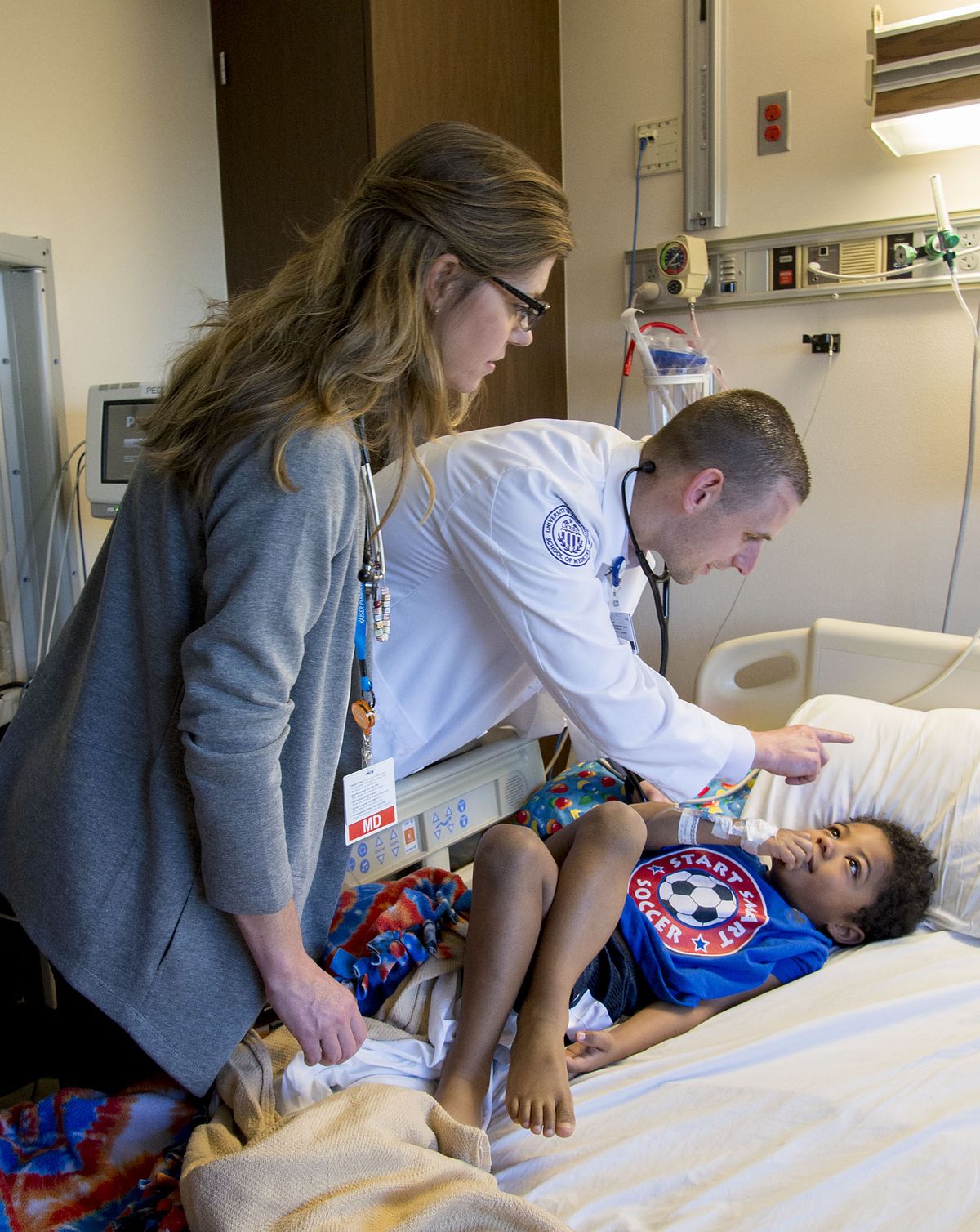UW-GU medical students start clinical rotations
Sixty students serve clerkships in area hospitals, clinics and practices

In 2016, the University of Washington School of Medicine and Gonzaga University, through their Regional Health Partnership, welcomed the largest incoming class of medical students to Spokane.
Sixty UWSOM students began their training on the Gonzaga campus, and now those students are entering their third-year clinical rotations.
“They’ve been preparing for the last 18 months for this transition to the clinical arena, and it’s the first major milestone on their road to becoming a physician,” said Judy Swanson, Assistant Clinical Dean with the UW School of Medicine in Spokane.
During rotations, students work alongside physicians and residents at teaching hospitals, have supervised access to patients, and gain valuable hands-on experience. During their third-year rotations students will complete required clerkships including, internal medicine, obstetrics and gynecology, and surgery.
Vishu Anekonda is enjoying his internal medicine clerkship at Providence Sacred Heart Hospital.
“I made the adjustment, shifting from focusing on grades to learning about effective patient care,” he said. “The faculty here have been so wonderful and supportive.”
Also helpful— he’s not alone while making that shift.
“You’re learning with a team of medical students, a resident, a senior resident and we are overseen by a attending faculty physician,” he explained. “I really enjoy the team dynamic that focuses intently on patient care. It’s just great because everyone is at a different stage of learning. I feel like they give you a lot of ownership and your input is welcomed.”
Working in a hospital setting can be challenging, and that’s just what students like Anekonda appreciate.
“I’m on nights now, and we recently had a patient come in with 15 problems that all needed to be managed,” he said. “I like that level of complexity. It really forces me to stretch my clinical reasoning skills.”
Swanson, who is also a faculty member of the Internal Medicine Residency in Spokane, said one benefit of the new curriculum is that students get clinical time from the very beginning of medical school.
The benefits of that early clinical exposure became apparent to Annie Yang during her internal medicine rotation.
“Because we’re comfortable interacting with patients, the transition has been seamless,” she said. “I felt very prepared.”
For her, seeing firsthand how all of the human body systems are interconnected and work together has been thrilling.
“It’s like putting a puzzle together,” she said. “It’s kind of magical.”
Yang expressed appreciation for the support she’s received from the interns and senior resident.
“They’re really busy, but they always take the time to answer our questions,” she said.
In addition to hospital settings, students do rotations at area clinics where their skills and enthusiasm shine. There’s synergy among the broad network of local residency programs in which UWSOM medical students participate.
“I just had a conversation with one of the OB/GYN physicians at Rockwood Clinic who told me how well prepared our students are to step into the clinic and begin seeing patients with them,” Swanson said.
That preparedness gives the students a boost of confidence as they navigate their clerkships.
“I spent my first two weeks in the ICU, dealing with the intense acuity right from the beginning,” said MacKenzie Rinaldi. “I’m surprised at how much I know!”
During her clerkship at Providence Sacred Heart, Rinaldi said she’s been able to hone her diagnostic skills.
“Coming off the Board exam* and going right into rotations helps cement the things we were just learned” she said. “And we get so much exposure to clinical medicine in the new curriculum. UW prepared us really well. It’s exciting to finally be practicing and working on becoming what we’ve always dreamed of.”
The faculty shares that excitement.
“It’s wonderful to see all that time they spent studying and all that academic knowledge, blossom in clerkship,” said Swanson. “When I see them care for their patients, I know we’re leaving medicine in good hands.”
*The first of three exams from the USMLE—United States Medical Licensing Examination to ensure the student has the necessary knowledge and skills to begin clinical training.